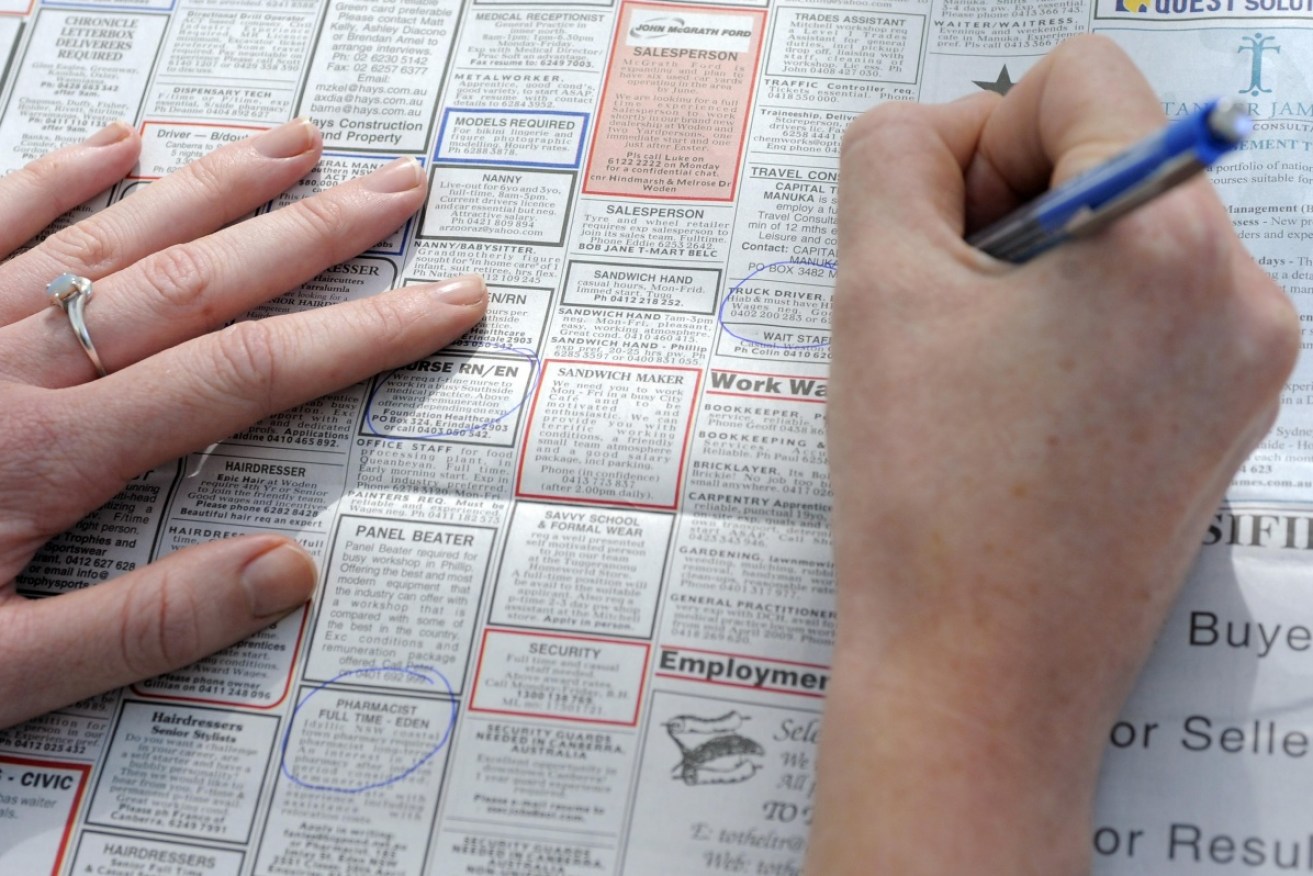This is where it’s hardest to find work in Australia

Job hunting hasn't recovered to pre-GFC levels, when the median job search was just 11 weeks. Photo: AAP
Job hunting can be a tedious and even soul-crushing process, especially for the unemployed. Sadly, for many Australians it can take them well over 50 weeks to find new work.
New data released by the Australian Bureau of Statistics revealed that the median job search duration was 18 weeks nationally in May. This was unchanged from the same time in 2015 and 2016, meaning workers are getting no relief.
The hangover effects of the global financial crisis continue to be felt in the labour market. Job hunting hasn’t recovered to pre-GFC levels, when the median job search was just 11 weeks.
Nor has job searching been consistently this hard since the troubled 1990s, when the median rate was as high as 26 weeks.
While things may not be worsening at the national level, job hunting in parts of Queensland, New South Wales, Victoria and South Australia is far tougher than the overall figures suggest.
The Darling Downs-Maranoa region of Queensland is the least attractive place in the nation for those seeking employment, with a median job search of 64 weeks – almost six times higher than the national figure.
Click on the infographic to see the other toughest job markets
And there are plenty of other labour market indicators that should concern workers.
Underemployment is at its highest level since records began in 1978, based on the ‘trend’ measure preferred by the ABS.
The trend estimate of underemployment worsened from 8.7 per cent in December-February to a historic high of 8.8 per cent in March-May, which meant 1.1 million Australian workers wanted more hours.
A continuing slide in the number of hours people are working and ongoing worries about household debt were what convinced the Reserve Bank that the official interest rate should remain unchanged at its last meeting.
Workers also learned from the latest GDP figures earlier this month that the share of national income going to wage earners fell in the March quarter to 51.5 per cent, the lowest level since 2009. Meanwhile, the share of national income going to profits rose to a five-year high of 27.5 per cent.
The result was perilously close to a 53-year low. Before 2009, the wage share of national income hadn’t shrunk so small since it hit 51.3 per cent in 1964. Workers’ share of GDP was high as 62 per cent in 1975.
This means the fruits of the economy have been flowing away from Australians who work for a living – those who prop up economic growth with their spending – and towards the rich minority who tend to derive their income from corporate profits, rents and interest payments on financial investments.
And there is a big blow coming.
From this coming weekend, more than 600,000 low-income workers in hospitality, fast food, retail and pharmacy sectors will have their pay reduced as the Fair Work Commission’s cuts to Sunday penalty rates come into effect.
Earlier this month, the Commission denied requests from unions for the wages cuts to be postponed for two years. Instead, it chose to stagger the cuts to Sunday loadings, which means workers in affected industries will have their wages cut every year on July 1 until 2019 or 2020, depending on their industry.
The Coalition government refused to back a Labor bill on June 20 that would have abolished the cuts. A vote was narrowly lost 72-73 in the House of Representatives after Nationals MP George Christensen crossed the floor.
From July 1, Sunday penalty rates will be cut by 5 percentage points across the four sectors for full- and part-time workers, bringing penalty rates to 145 per cent for fast food; 195 per cent for pharmacy and retail; and 170 per cent for hospitality.
The McKell Institute, commissioned by the ACTU, has calculated based on 2011 census data that if the Sunday penalty rate cuts had been implemented in full on July 1, roughly 621,000 workers would have lost $1.4 billion in disposable income a year, with rural and regional areas the worst hit.
These figures will be lower now that the Fair Work Commission has agreed to phase-in the Sunday penalty rate cuts.








